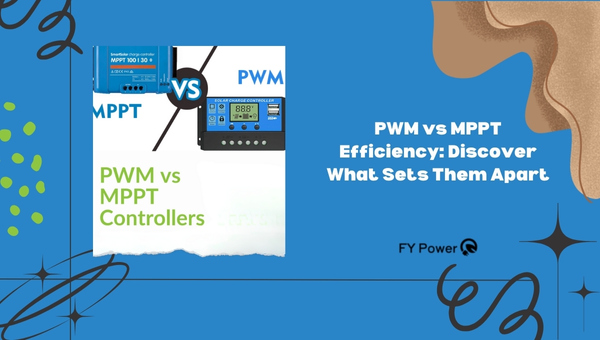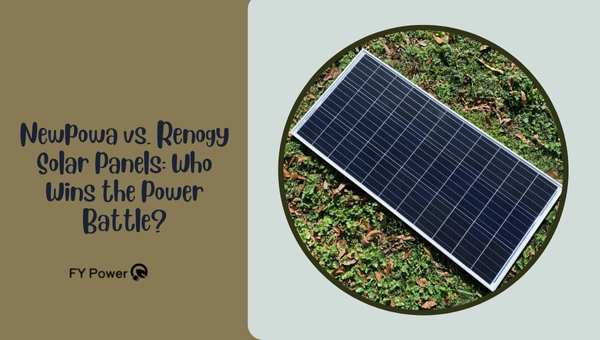When I think about “Monocrystalline vs Polycrystalline Solar Panels”, it’s like trying to pick the winner in a heavyweight boxing match. Both contenders have their unique strengths, and believe me, the difference between them can make or break your energy savings.
You might be on the fence right now, not knowing which one to cheer for – and it’s a big decision considering you’re not just choosing solar panels; you’re choosing the future of your electricity bill.
Making the right choice between monocrystalline and polycrystalline solar panels boils down to balancing efficiency and cost over time – both play massive roles on your rooftop.
Monocrystalline panels are known for their sleek black look and high efficiency, making them effective even on smaller roofs or areas with less sunlight.
On the flip side, polycrystalline panels are slightly less efficient but often come with a smaller price tag upfront – making them a go-to choice for those keeping an eye on initial expenses.
What You Will Reap from This Read
- Crystal clear comparison of solar panel types
- Budget-friendly advice for long-term savings
- Efficiency secrets tailored to your home climate
- Insights into how each option impacts nature’s look on your roof
Decoding Solar Panel Types: An Overview
When you’re looking into solar panels, you might get a little confused. There are mainly two types that people talk about a lot. These are called monocrystalline and polycrystalline solar panels.
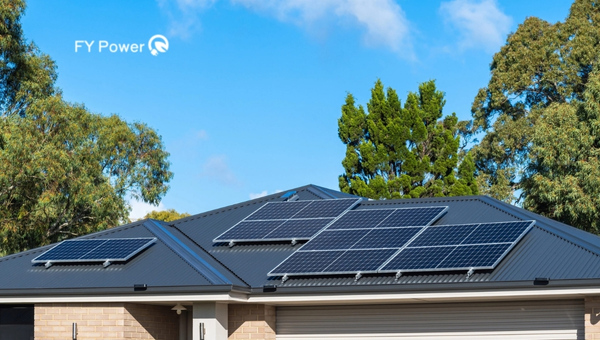
They both have their own good points and not-so-good points. Let’s take a deep dive to see what makes each of them special.
What Are Monocrystalline Solar Panels?
Monocrystalline solar panels are the kind that many folks know about for being really good at turning sunlight into electricity. I’ve seen a lot of them on homes and businesses because they can be pretty sleek and nice to look at.
- Efficiency: They pull ahead of others with their high efficiency, meaning they can make more power from the same amount of sunlight.
- Look: Most times, these panels have a dark black color that some people find nicer than other types.
- Cost: But with all these great things, they usually cost a bit more too.
- Lifespan: One thing that’s cool is they tend to last longer than other kinds – we’re talking many years here!
People pick monocrystalline when they want something that works really well and looks great on their roof.
How Do Polycrystalline Solar Panels Stand Out?
Polycrystalline solar panels are the ones with bits that look blue and sometimes like there’s a mosaic on them. They’re pretty popular for some good reasons too.
- Cost-effective: The biggest thing is they cost less than monocrystalline ones. That means if you don’t want to spend loads of money, these could be right for you.
- Makeup: Now, they are made by melting lots of silicon bits together as opposed to using one big piece.
- Efficiency Talk: Alright, so these aren’t as top-notch at turning light into electricity as the monocrystals – but don’t write them off yet!
- Space Needs: Because they’re less efficient, you might need more space on your roof or land to fit enough panels and get the power you need.
So people often go for polycrystalline when saving money is their main goal or if they’ve got plenty of space for the extra panels.
Also Read: Who makes Predator generators?
Here is a Quick Comparison of Both
| Feature | Monocrystalline | Polycrystalline |
|---|---|---|
| Efficiency | 15-20% | 13-16% |
| Cost | Higher | Lower |
| Long-term Savings | Potentially higher due to efficiency | Lower upfront cost, but lower efficiency may lead to less savings over time |
| Space Requirement | Less space needed due to higher efficiency | More space needed for same power output |
| Temperature Performance | Better performance in hot climates | Lower performance in hot climates |
| Low-light Performance | Better performance in low-light conditions | Lower performance in low-light conditions |
| Lifespan | 25-30 years | 20-25 years |
| Durability | More durable due to single-crystal structure | Slightly less durable due to multi-crystal structure |
| Warranty | Typically 25 years | Typically 25 years |
| Appearance | Black, uniform color | Blueish hue with speckled pattern |
The Showdown: Monocrystalline vs Polycrystalline
When you look at solar panels, two types you will often hear about are monocrystalline and polycrystalline. People sometimes get stuck on which one to choose.
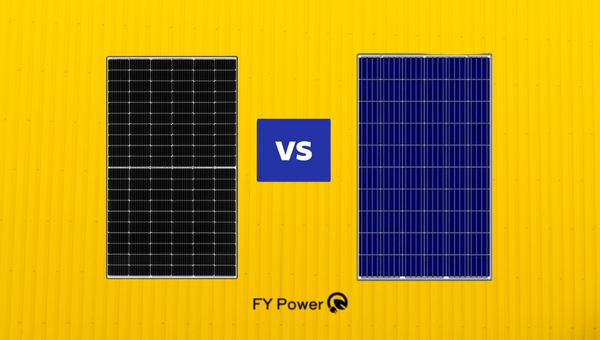
Both have their own good points and not-so-good points, kind of like choosing between apples and oranges: they’re both fruits, but they taste different. Let me walk you through what makes each one special, so you can pick the right one for your home.
Comparing Costs – Price Points Matter
When I look at solar panels, the first thing that jumps out is the price tag. Let’s dive into how monocrystalline and polycrystalline solar panels stack up against each other in terms of cost:
- Upfront Costs: Monocrystalline panels are often more expensive upfront. They use purer silicon, which means they cost more to make.
- Polycrystalline Panels: These are usually less pricey when you buy them. They’re made with different bits of silicon melted together, which is cheaper to do.
- Long-term Savings: Even though monocrystalline panels cost more at first, they can save you money over time because they tend to be more efficient.
- Return on Investment (ROI): If I’m thinking long-term, monocrystalline might be a better deal because they work better for longer and could lower my energy bills by a bigger chunk.
So yeah, I’d say it’s not just about what you pay today but also about how much these panels are going to help you save on those pesky electricity bills in the years to come.
Efficiency Face-off – Maximizing Energy Output
Efficiency is all about getting the most bang for your buck — or the most power from your panels. Here’s what I’ve learned comparing these two:
- Monocrystalline Panel Efficiency: These guys are champs at turning sunlight into electricity — usually around 15% to 20% efficiency. This means in places with lots of sun, they’re superstars at making power.
- Polycrystalline Panel Efficiency: They’re not slackers but typically fall behind mono panels with efficiency between 13% and 16%. So if your roof isn’t overflowing with space for lots of panels, mono might be your best bet.
People who live where there’s a lot of sunshine or those who don’t have loads of room will probably get more from monocrystalline panels even though it’s a bit harder on their wallets upfront. It’s like choosing between two kinds of cars – one that might be pricier but gives you better gas mileage and another that’s cheaper initially but doesn’t go as far on a gallon. It all depends on how you’re going to use them!
Keep this in mind too – “efficiency” isn’t just some fancy term; it directly impacts how many dollars stay in or fly out of your pocket!
Also Read: 12V Battery Wiring: Series & Parallel Connections
Customizing Your Choice – Factors to Consider When Selecting
When it comes time to pick solar panels, there’s more to think about than just the Monocrystalline vs Polycrystalline Solar Panels. It’s like choosing a coat.
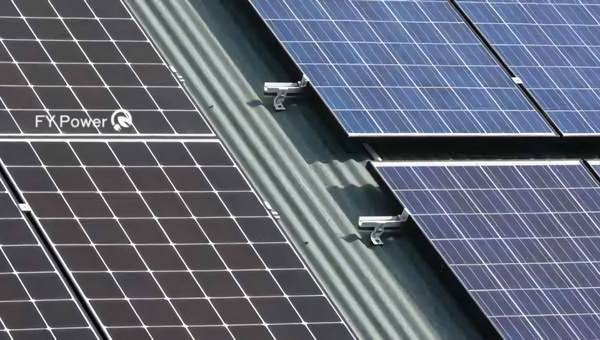
You don’t just think about the color; you also consider how warm it needs to be, how much you can spend, and how it fits. I’m here to help you look at everything that matters when picking solar panels that fit just right for your home.
Assessing The Price Impact on Your Budget
Price can make or break a deal. That’s true for solar panels too. Monocrystalline and polycrystalline solar panels come with different price tags and savings in the long run. Let’s get into the nitty-gritty:
- Monocrystalline solar panels are like high-end brands; they cost more upfront because they are efficient and look neat.
- Polycrystalline solar panels might not break records in looks or power but are easier on your wallet from the start.
In time, both types can cut down your energy bills. It’s like investing in a good appliance that saves electricity.
There might be sweet deals from the government or local authorities that give you some money back if you go green with your energy choice.
I’ll tell you this: always keep an eye out for tax credits or rebates that match up with your choice of panel. This is money that stays in your pocket! Governments often help out folks who choose solar power through these incentives.
Available Mounting Space Constraints
Space: it’s what we all need, whether we’re talking about our personal bubble or where to put our stuff – including solar panels. If space was unlimited, we’d all have fields of solar panels soaking up sunshine! But here in reality-town, space is precious:
- Do you have a big roof? Great! You might fit enough polycrystalline panels up there because they don’t mind snuggling close to each other.
- A smaller patch of roof? Might want those top-of-the-line monocrystallines; they pack more punch per square inch.
- Remember: no amount of squeezing will make the extra room appear – choose based on what fits!
Choosing between monocrystalline and polycrystalline isn’t just about preference but practicality too. Make sure those shiny new friends called “solar panels” will feel at home on your roof!
It doesn’t end here though – next up we need to talk about powering through various weather conditions and making sure these silent energy-makers stay strong over time! Stay tuned as I dive deeper into tailoring the perfect sunny setup for yourself.
Adapting to Climate Variances
When it comes to handling the ups and downs of weather, not all solar panels are created equal. So, how do monocrystalline and polycrystalline panels measure up when the weather decides to throw a curveball? Let’s break it down:
- Monocrystalline solar panels – These guys are like the tough kids on the block. They don’t let a little heat get them down. In fact, they work pretty well even when things get hot outside. That’s because they’re made from high-quality silicon that can take the heat without losing much power.
- Polycrystalline solar panels – Think of these as more laid-back in the face of rising temperatures. They tend to lose some steam when it gets really warm. That means if you live somewhere where summers feel like you’re living in the sun, these may not be your best bet for peak efficiency.
When clouds roll in or snow starts falling:
- Monocrystalline keeps chugging along better than most because each panel is cut from a single crystal of silicon, which means it’s more “pure”. This helps in low-light situations.
- Polycrystallines might struggle a bit more since they’re made from many pieces of silicon fused together.
Longevity & Durability Concerns
Now let’s chat about how long these solar panels last and how strong they are against Mother Nature’s mood swings:
- Monocrystalline solar panels live quite long – we’re talking around 25 to 30 years! And since their one big crystal is pretty sturdy, they aren’t scared of some wind or hail.
- Polycrystalline solar panels have got good years in them too, but their patchwork nature makes them slightly less tough compared to their single-crystal cousins.
Here’s what else you should consider:
- Warranty talk: For both mono and polytypes, warranties matter. Most companies will offer something like 25 years guaranteeing that your panels won’t just give up on you.
- Standing tall against storms: Both can hold their own in rough weather, but mono tends to have a slight edge due to its uniform structure.
So if sticking around for decades matters heaps to you – both types are solid options with slight props going out to monocrystalline.
Aesthetic Preferences & Color Choices
Righto! Apart from all that techie performance stuff, looks matter too! And here’s where I come into play:
- Monocrystalline solar panels – Slick and stylish! They usually have this dark black hue that looks neat and tidy on roofs.
- Polycrystalline solar panels – These come off with a bit more flavor; think blue-ish speckles over here!
Why this matters:
- Some folks might fancy their home looking sharp with those slick dark tiles—monos fit right in then!
- Others who prefer a bit of spice or don’t mind varied patterns could dig polys instead for their unique look.
So go ahead and pick whatever fits your taste best ’cause with both options; either way, you’re still getting sunshine turned into sweet usable energy!
Also Read: Storing Your Generator: Short-Term & Long-Term Storage Tips
Conclusion
After diving deep into the subject, I’ve unpacked the various nuances in the “Monocrystalline vs Polycrystalline Solar Panels” debate. I discussed how the choice between monocrystalline and polycrystalline solar panels could be influenced by a mix of factors. From efficiency and cost to appearance and longevity, each type offers distinct advantages.
Monocrystalline panels are more efficient but come with a higher price tag. On the other hand, polycrystalline panels are more affordable but may not perform as robustly in low-light conditions. These contrasts often lead folks to weigh their specific needs against what each panel has to offer.
Key Takeaway Points:
- Monocrystalline panels boast higher efficiency and sleek design.
- Polycrystalline options can be kinder to your wallet upfront.
- Climate and available rooftop space influence which panel type might suit you best.
- Long-term savings should also factor into your decision-making process.
- Don’t overlook aesthetic preferences; they add value too.
